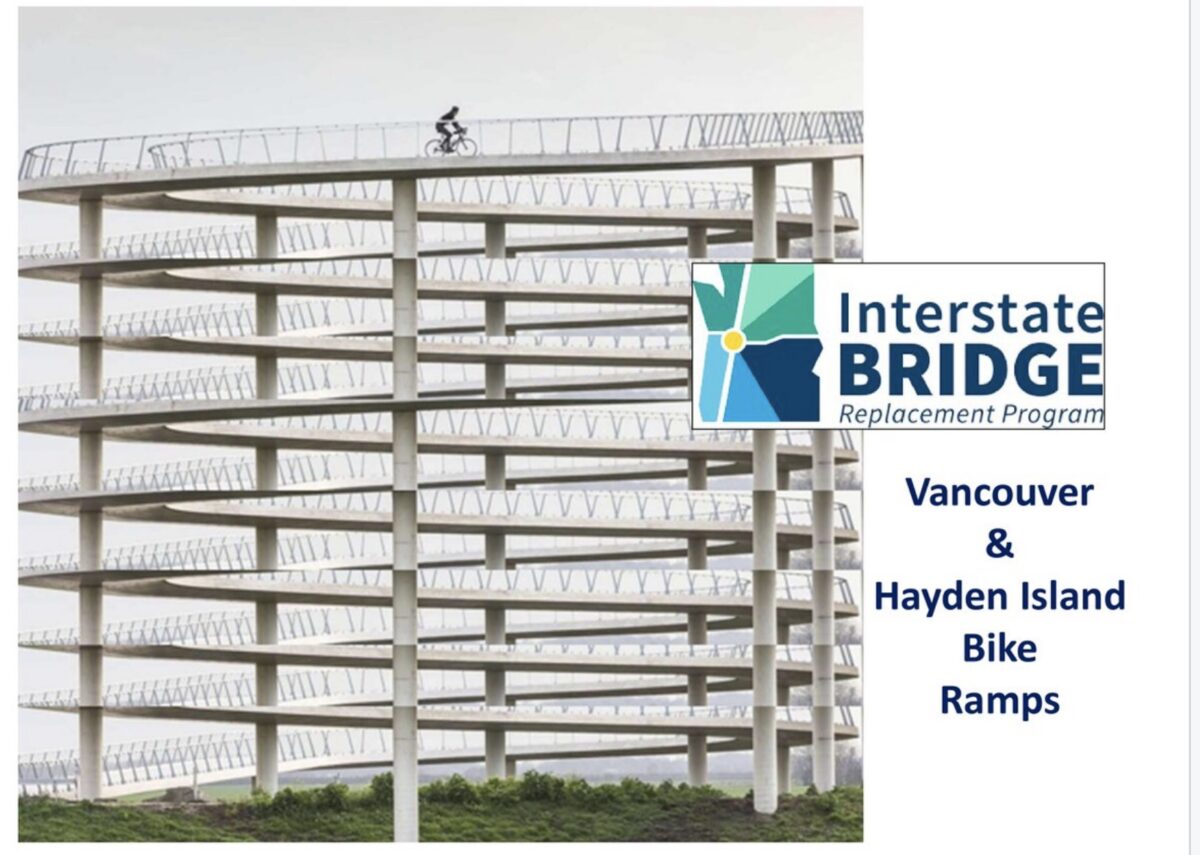
There are all types of ways to push back against a project you don’t like. As social media has matured in recent years, a lot of folks have become good at creating graphics that — when they go viral — can be a very effective way to establish a narrative. Look no further than someone like Tom Flood, who we had on our podcast a year ago and who’s now working on a book. Or there’s ex-Portlander Zach Katz whose @betterstreetsai Twitter account has blown up in recent weeks.
But as the saying goes, with great power comes great responsibility.
Bob Ortblad, a retired civil engineer and self-described “Historian of 200 years of infrastructure” who we’ve featured as a source for his expertise on the Interstate Bridge Replacement Program, is also good at turning engineering data into compelling visuals. One of the graphics he recently shared was a bit too compelling.
One of Ortblad’s main concerns with the IBR project is that it will be too high to easily bike and walk up to. To create a recent graphic, he took data from official, draft proposals of the bridge design, then combined with a Dutch bike ramp design manual to come up with a mockup he feels is an accurate representation of what we can expect to see on a new bridge. It’s a striking image that shows eight spirals required to reach the bridge deck level.
As you can see above, he then shared that graphic on Twitter with the official IBRP logo and font, and added no disclaimer to suggest it was a just a mock-up.
The striking image immediately caught the attention of several of Ortblad’s followers (above), some of whom expressed outrage based on their assumption that the graphic was real. Confusion ensued. The reactions also included some people (including me) urging Ortblad to rethink his approach to using such a misleading graphic.
Yesterday, the IBR account responded to his tweet to clarify that the graphic, “Was not created by IBR & uses our logo without authorization. Multiple ramp designs are under consideration to connect the multi-use path to the bridge. The pathways will be built for all users & will be greatly improved over what exists today.”
While I don’t like Ortblad’s misleading approach, he does seem to have made a point: If the IBRP would be more transparent with the ramp design, he wouldn’t have to speculate and there’d be no confusion (for their part, the IBRP would argue that they simply aren’t able to provide more detail at this stage of the process because the Locally Preferred Alternative was only endorsed in late July).
Advocacy can work in mysterious ways. And given that absurdly spiraling bike ramps are actually a tool DOTs have used in the past, maybe Ortblad’s misleading graphic will help us avoid the fate it depicts.


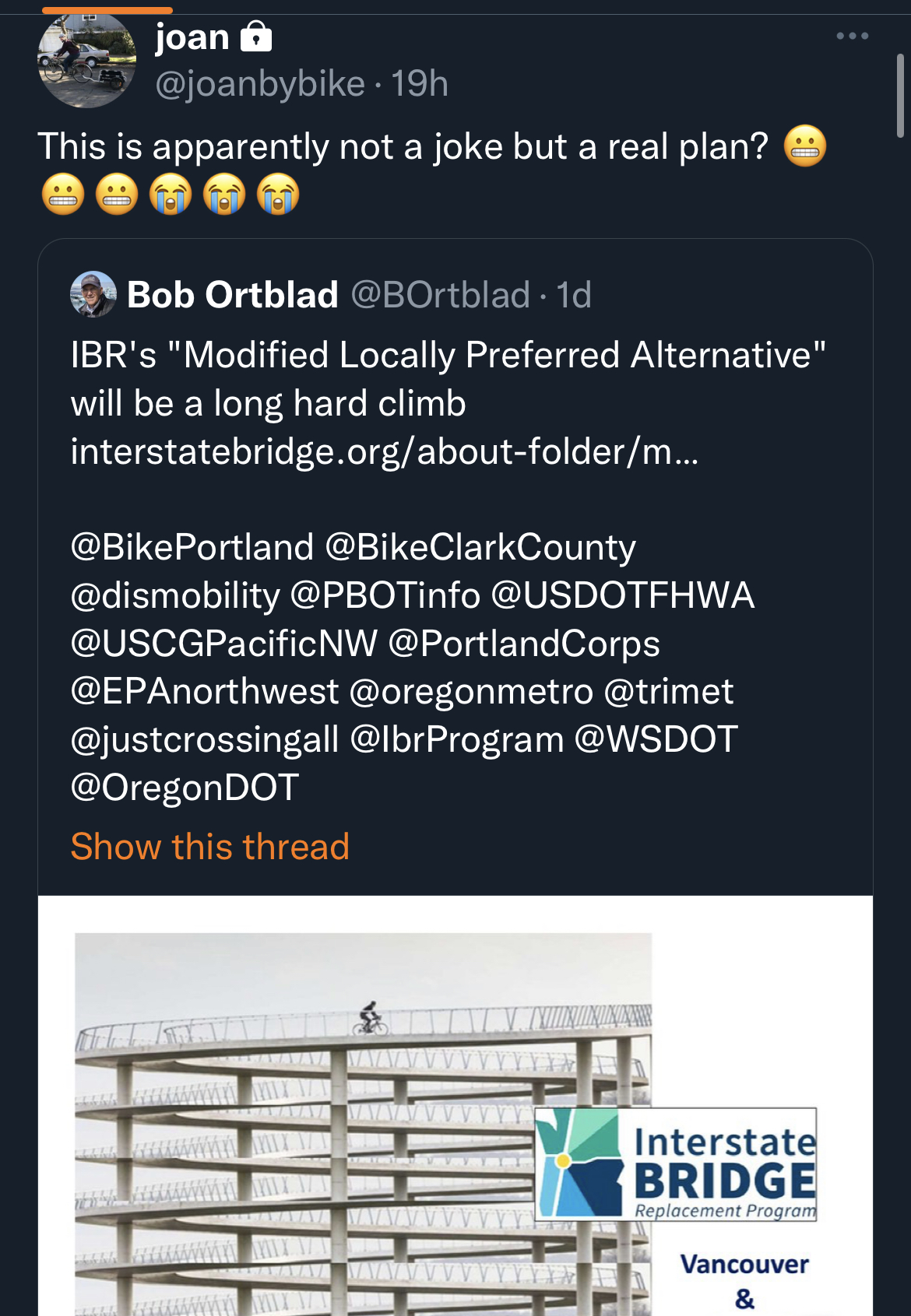
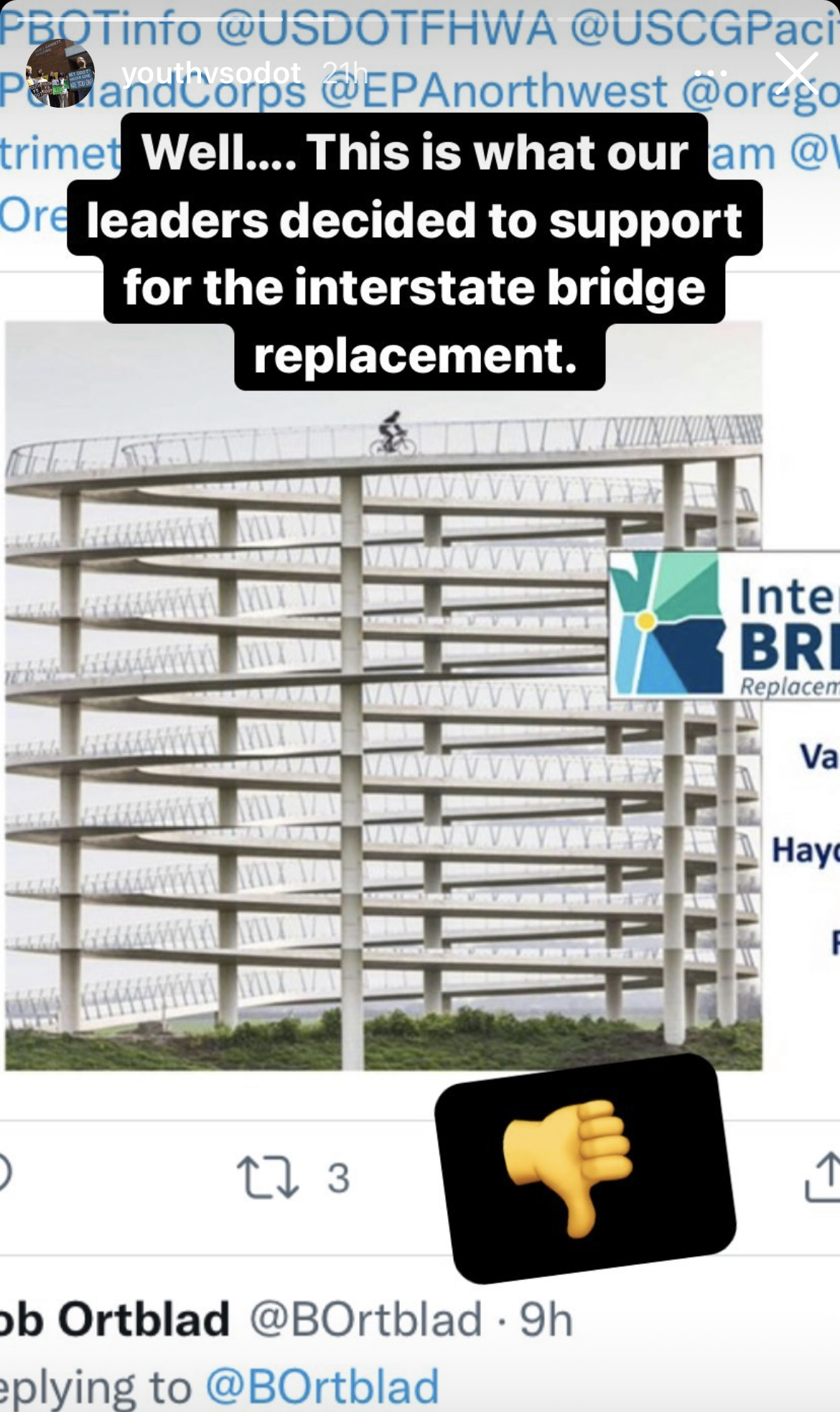

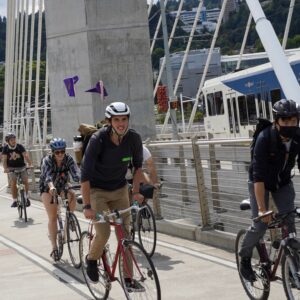
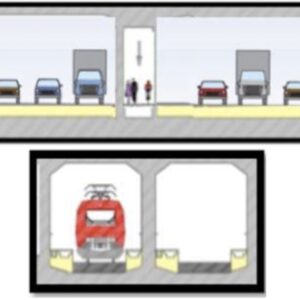
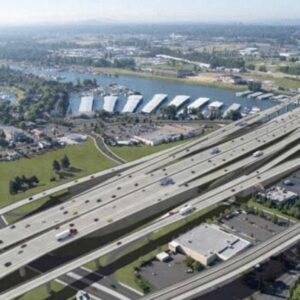
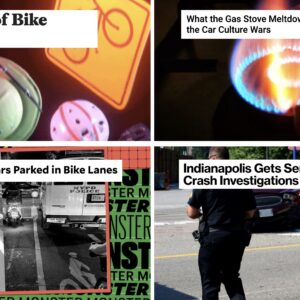
Thanks for reading.
BikePortland has served this community with independent community journalism since 2005. We rely on subscriptions from readers like you to survive. Your financial support is vital in keeping this valuable resource alive and well.
Please subscribe today to strengthen and expand our work.
The real story here is not that Bob Ortblad tried to show what IBR is proposing, and how absurd it is, its that a planning effort with more than $100 million in hand to develop, design, and market this project has yet to produce a single rendering showing how the project will appear to human beings walking on the ground, riding cycles, or living anywhere near the bridge. This is a calculated strategy to conceal the massive scope of this 5 mile long, 12 lane wide freeway project. Instead of attacking a citizen for trying to fill this gap, the media, Bike Portland included, need to demand that IBR produce renderings that show what the project will look like.
Thanks, Joe. This is exactly it. The issue isn’t Bob. It’s the information vacuum intentionally cultivated so IBR and the states can continue to pretend this isn’t a major highway expansion.
I agree with Joe but I also think Bob’s graphic is bad idea. Confusing people like this is not a good thing and it muddles the civic dialogue waters when different people believe different things. We all need to operate from the same set of facts and the graphic was/is making that much harder. Some people think that is the actual design when it is not the actual design! I’m all for satire, but this just doesn’t seem like a great idea to me.
“Misleading” or not, we’re in a pre-direct-action information war with the illegitimate entities pushing these freeway projects. On such a “david vs goliath” battlefield, and in the interest of fighting fire with fire, the logos associated with these entities are fair game and should be exploited to the fullest extent to further bring their obfuscatory propaganda under the spotlight. “With great power comes great responsibility” is a (lazy) line of thinking that should be directed upwards, not downwards. Keep up the good work, Bob! Looks like a successful jab to me and it even forced the freeway gods to respond.
That you’re not complaining about the name and logo for an ODOT project that is only 25-30% bridge replacement, and is 60-75% other stuff (highway interchanges and expansions for miles, etc.), is a bigger problem.
It’s not primarily a bridge replacement project, period. Stop reporting on it as such.
This article did not ultimately conclude that it was wrong for Bob to put this rendering out. I agree with other commenters who say Bob was right to provide some image of what the freeway expansion might look like given the fact that the IBRP team hasn’t released substantial info. But I also believe those images would be more helpful with clear context.
And BP’s reporting on this project is consistently critical of the IBRP’s framing of the project as a bridge replacement instead of a freeway expansion.
“consistently critical”? Not sure about that. I didn’t see anything in this article reminding people the IBRP isn’t a bridge replacement program. Indeed, this article calls it the brand ODOT wants.
ODOT created this brand based on what would make people most support it (they moved away from calling it the Columbia River Crossing for a reason).
If you’re calling the project by the false name they want, then explaining later why it’s misleading, they’re winning the game.
It’s like saying “death taxes” instead of estate taxes. “Death taxes mainly apply to very-rich people” still uses the term “death taxes.” Or calling Democratic party officials Democrat party. Or calling gun violence laws something to do with the 2nd amendment, when clearly nothing can infringe on the U.S. Constitution, it’s just a nonsense connection to the Constitution that polls better.
Language and names matter. Calling it the interstate bridge replacement program, which you did in this article, is what people who want this highway expansion want you to call it. Call it the IBR Highway Expansion or something of the sort.
I’m with Bob on this one. It seems anything BUT lazy to demonstrate what might be if we allow the moneyed caliph to make decisions in the background without input from the users.
I’ll admit that I was confused by this initially, and almost retweeted it thinking it was official. I think the author would have made a stronger argument if he’d omitted the logo and included his assumptions.
However… I would be extremely surprised if no drawings have been done to determine what is feasible. The agencies working on this project could choose to release these, but my experience is that they won’t, unless forced to by a public requests request.
Personally I’d be very surprised if there are any engineering drawings of the bike ramps. More likely they’ll put in stairs and elevators, but most likely they drew nothing at all. To most highway designers, bicycling, walking, and using public transit are recreational pursuits, and not modes of transportation for “serious” commuters.
I’m glad at least someone is attempting to make renderings of this project, IBRP has been way to reluctant to show any visuals of this project from the ground to try and skirt around how much of a monstrosity this project will be.
Nice rendering (based on the NL CROW manual?)…minus the logo confusion.
Back when I was the City of Vancouver’s representative on the CRC’s bike ped facility design subcommittee (~2007-2009)…this design topic was heavily discussed towards the end [my memory of the topic]:
1) when designing for multimodal ramps the question was raised: “how multimodal should they be?” At a certain point (height & total running distance) they really should really only primarily be for bicycles and other micro mobility devices (typically powered, even powered wheelchairs), even more so in 2025 vs 2010, as the inclusion of repeated level rest landings for US ADA compliance (if the slope >8%) make for a horrible dippy/ jerky downhill ride plus greater length…thus the need for elevators at this point (with the higher bridge height) for ADA and all ages bike access;
2) spirals are better than many switchbacks for long bike facility ramp paths that serve bike with trailers / bakfiets etc;
3) And the question of which direction of a cork screw: clockwise vs counter / anti clockwise? If the facility has a combined bidirectional flow (vs separate ramps or DNA like spiral paired ramps) then best to have the downhill direction in counter clockwise / climbing in clockwise as this would minimize the friction / contact with the rail for the faster traffic; and
4) all elevators should be designed to be a pull through style (and long enough) so that wheel chair users and parents with bike trailers / bakfiets etc. can easily exit with a crowd.
Other design issue: the ODoT & WSDoT institutions will need to publicly discuss and formally adopt (vs unwritten administrative shifting interpretations) if the managing entity for this facility will enforce / sign a single direction ramp flow (for bikes and motorized light e-vehicles) if there is a constrained cross section, like the current Interstate bridge. If they will not enforce…then the design needs to not be constrained and planned accordingly for bi-directional flow.
This is fantastic work. We need more activism like this.
I literally cannot wait to ride up and down that. I don’t ride anywhere near there, but I’ll make a special trip.
In all these discussions about design I feel it’s important to consider the soul of the cyclist. By nature we are a hardy bunch, rebels in spirit, always with an eye out for adventure. Upon waking, we peer out the window at the inclement weather and a rye smile flashes across our face as we embrace nature in its raw form. It’s this grit that separates us from the caged road users and is the source of the physical and mental benefits of cycling. Sadly over the years I’ve noticed cycling advocates attempt to make cycling as easy as driving, diminishing the character building aspects of riding a bicycle. As advocates I feel we focus too much on safety and comfort and not enough on encouraging individuals to shed their illogical fears and to embrace discomfort for the sake of their health, the health of the community and the entire planet. It should be obvious that our desire for comfort as weakened our societies. For a majority of man’s existence we have walked and toiled in nature and it’s this resistance that has allowed us to grow. I feel it’s important we maintain this attitude
I’m all for focusing on keeping cyclists safe from all the drivers these days acting like they’re in a Mad Max movie. But I completely agree with you on the “comfort” issue. I choose to ride a bicycle powered by my own efforts, not an electric moped powered by PGE. I like that imagined design, it looks like a climbing challenge to me.
What a toxic view. This exact mindset is what pushes people away and has made cycling adoption piss poor. Cycling should be safe, comfortable, and mundane. Take your “character building” bs elsewhere
Reality is is straight down the center for me. Nothing makes me feel more alive than attempting and hopefully finishing a particularly grueling or particularly wonderful epic ride. But no one wants to be forced to cycle the 205 bike path through the mountains of garbage or on a dangerous highway where stoned, drunk or distracted drivers strake your comfort zone with scant inches to spare in the knowledge they’re safe from prosecution, or on a city owned cycle track that hasn’t been cleaned since the day it was opened with great fanfare to the public…
Toxic? You do realize we are in the midst of an obesity epidemic fueled mainly by our sedentary lifestyle? We become weak and docile, the time has come to harden up!
..but who is talking about changing the weather?
Stevie Ray Vaughn?
No one. I’m talking about changing your attitude towards it
Lying, deception, obfuscation, and misinformation peddling is wrong when ODOT does it and when ODOT’s detractors do it. Obama was born in Kenya. Democratic leadership are pedophiles operating out of a pizza place in D.C. The 2020 election was stolen. The decaying of truth is deeply corrosive and no media outlet should be it’s enabler.
Have you noticed your equivocation (in my experience de-rigueur with these “both sides-ing” arguments) of accusing people of pedophilia with creating a graphic exaggerating a design issue?
Both sides are not the same, and they rarely are.
Deceptions that support true and right-thinking (liberal, woke, science based) causes tend to set back those causes. Insane fabrications assaulting true and right-thinking causes are sweet nectar to low information voters who are unfortunately a powerful lobby. Sure the planned bridge is tall. It is disappointing that bridge detractors are so eager to embrace deceptions like the “other side”.
That’s an incredible image. All the talk about how high the bridge is, whether the grade will be 4% or 5% and how steep is that anyway, etc. is abstract. This graphic gives a total understanding of the climb at a glance.
I also agree with people who say this is what a project deserves to have happen when it uses the strategy of showing the project only in abstract aerial views. It blows that strategy away in a single view.
I think using the project logo was a mistake. It allows the project to focus on that (and be right) instead of having to address the fact that yes, this graphic is an accurate depiction of the elevation gain. The graphic is powerful enough to get attention without trying to trick viewers into thinking it’s official.
I find this take to be so disappointing. A day or so ago we were (rightly) appalled at the conspiracy-spewing motorist that is the product of incessant misinformation. And today we can’t decide if it’s right or wrong when our own activists purposefully try to mislead people with their own misinformation because it creates ‘discussion’ and asks questions. Weird- I just heard the same excuse from Alex Jones. Is it equivalent? No, it’s not -but does that make it right?
If we want to have the conversations, put up the design, pose your questions but don’t mislead people by pretending they agency/ project drawings. Let’s not add to the downhill slide away from truth and facts in public discourse through misinformation.
But how tall IS the route going to be??? I really want to know!
The Coast Guard is requiring a clearance of 178’ above the water for ships. The climb for a cyclist will be a few feet less than that. One expects the slope to be ADA compliant and not steeper than 5%. 170 divided by .05 is the distance of the climb – 3400’ (I think). That’s a long pull
The future IBR roadway surface may be as high as if you placed it top of the current bridge roadway at maximum lift (Vancouver side)…this is about about 50 feet lower than the top of the lift towers (if you cannot wait to see a lift phase)…depending which height is ultimately required.
Yeah, but if you zoom back your perspective, we are all just made of sausage dust http://www.abc.net.au/news/2022-08-05/french-scientist-apologises-for-chorizo-star-joke/101305334
And yet it’s NOT fake: If the bridge is XX high, a ramp is needed. Sorry no easy solution to this one. You can’t defy the laws of physics or human nature (too much and the high cycle path will rarely be used).
Ferry boat?(too much) Elevators? (too complicated), a special max train car mostly for bikes run more frequently, etc ? (maybe). Put a bike path on the Rail bridge.. (and take bikes out of the new CRC plan)
Personally, I think the bridges we have are good. Leave them be?. BUT built a separate “simple” truck-only bridge with no ramps say 5~10 miles before and after the Columbia.
Don’t forget the Marine Corp 7P’s: Consequences for centuries! If “Making Robust Decisions” (it’s a process) IS NOT possible, maybe we stay with the devil we know, plus appease commerce / truck traffic with a vastly less-expensive bridge. -JMS
Ferry system for bikes and peds is eminently practical and economical; it has been used with the 200 foot high motor-only Coronado Bridge in San Diego for 50 years.
With timed transfers from Max Yellow line at Hayden Island and CTRAN BRT on the other side a 15 minute interval would be possible.
Cool cruise over the Columbia versus ODOT’s humungous ultra nasty!
This kind of stuff does cycling no favors. It only provides fodder to those who portray cyclists as kooks and makes it that much easier for others to simply dismiss legitimate cycling concerns.
The elevation gain of the bridge is an issue (as it is for riding in many areas of town where both the grade and elevation gain is more than anything this bridge has the potential to be). Having said that, I have difficulty believing it will be a dealbreaker for those willing to deal with the inevitable distances, wind, etc. inherent to even the best days — and the darkness, cold, heat, people living on the path, etc. the rest of the time.
Given how few people go out on showcase infrastructure right now when the weather is as good as it gets, distances are shorter, and the terrain is easier, even a best case scenario would be any pathway will be lightly used with a high cost per trip.
I’ll be one of the ones riding it, but building out areas that actually have a chance of being used seems a better place to direct energy. For example, the new lanes on Lombard are a huge improvement — that stretch was formerly accessible only to fast riders with especially high traffic tolerance, and it’s now rideable by anyone. All this in an area with decent population and business density.
I don’t understand the push to minimize grades on the bridge to such a degree. We want to make it ADA accessible but it is a mile and half across the bridge, if people can’t handle a 5%+ grade they can’t handle the mile and a half.